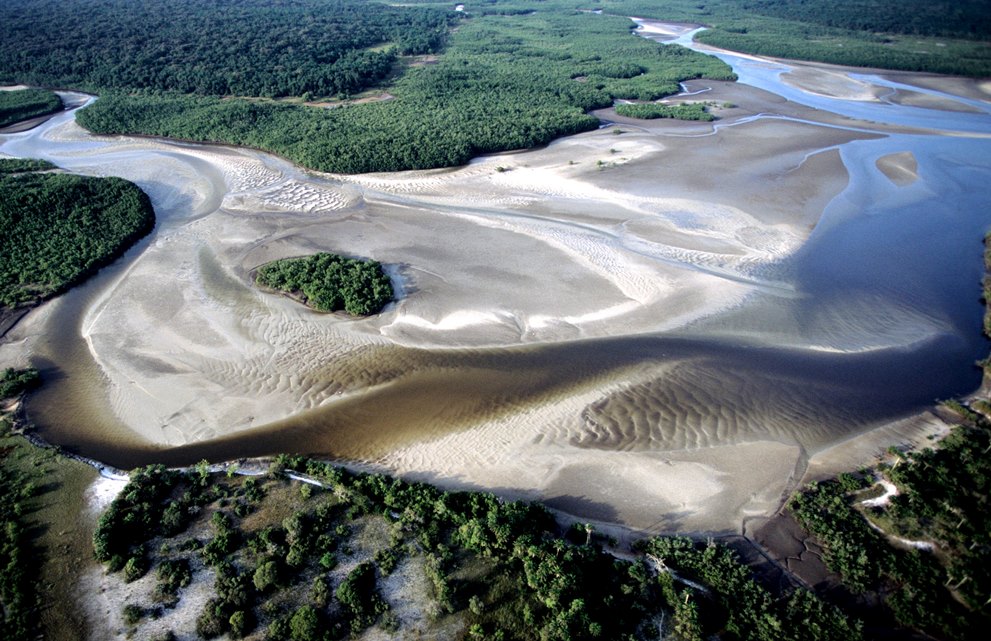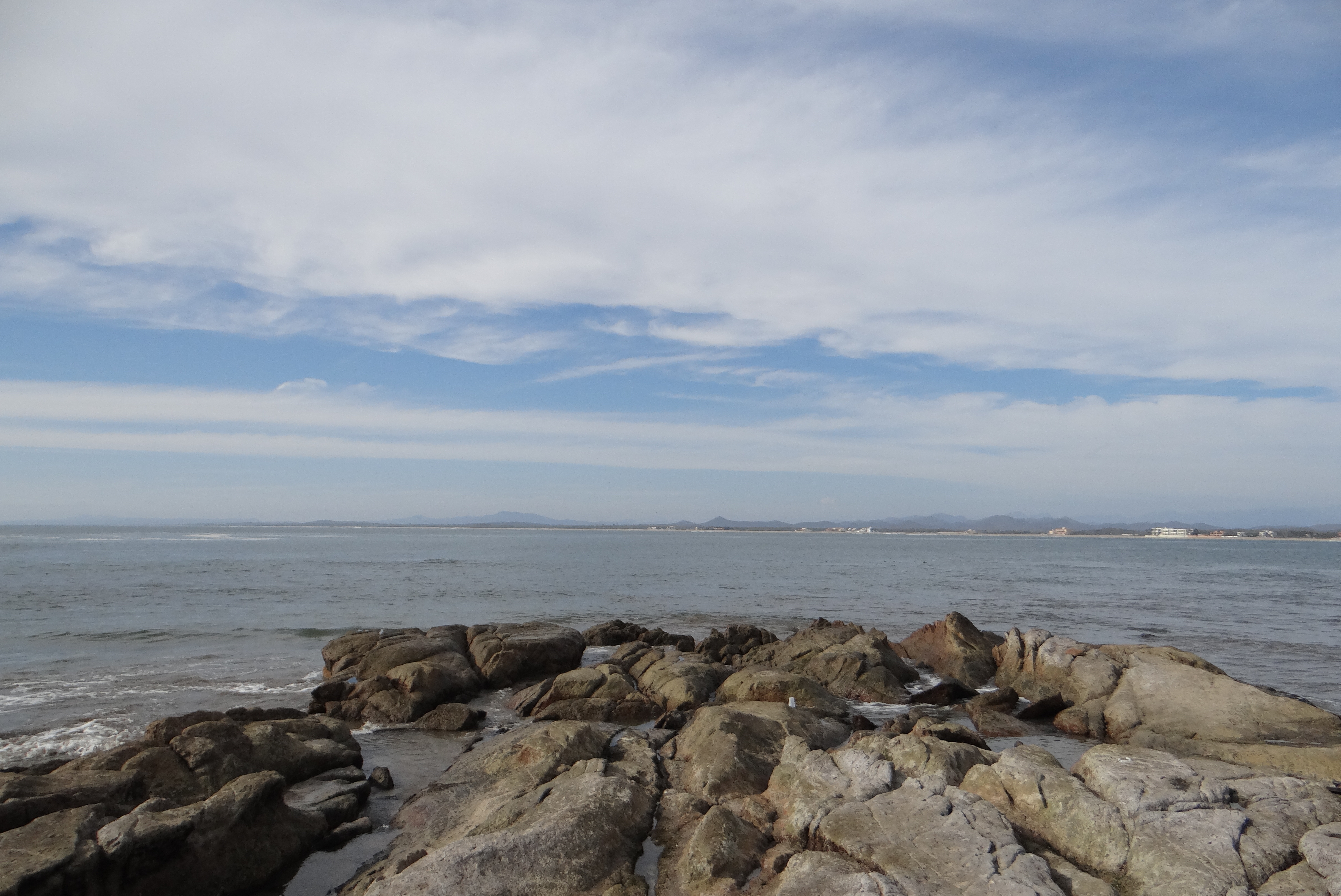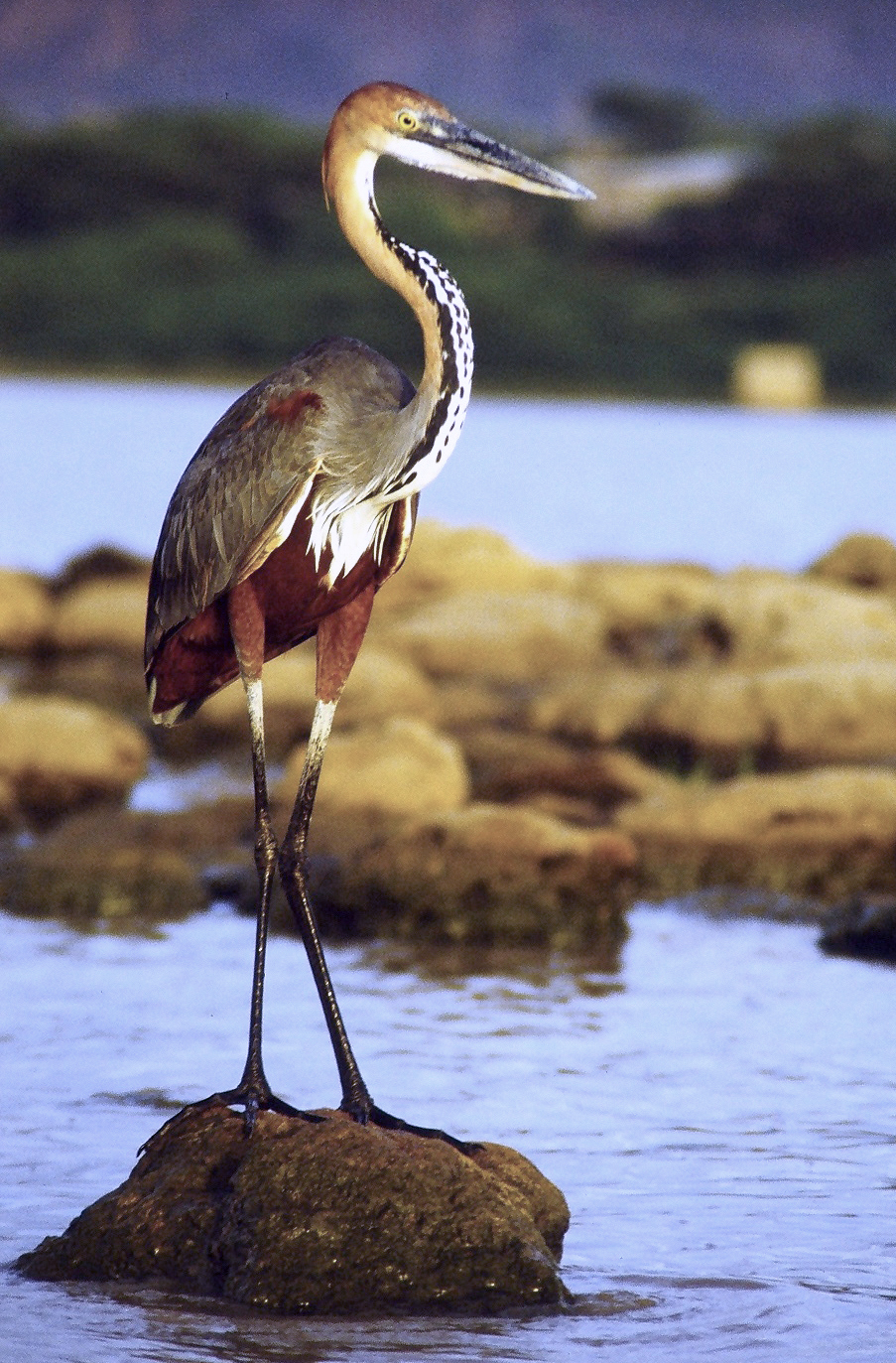|
Lagunas De Chacahua
The Lagunas de Chacahua National Park (), created in 1937, is a national park located in the Municipality of Villa de Tututepec de Melchor Ocampo in the Mexican state of Oaxaca, about 54 km west of Puerto Escondido, near a village called Zapotalito. It can be reached via Federal Highway 200 or by boat from Puerto Escondido. It is located between the towns of Santiago Jamiltepec and Puerto Escondido. The park encompasses 132.73 square kilometres, about 30 km2 of which is taken by various lagoons such as the ‘’’Laguna de Chacahua,’’’ ‘’’Laguna de La Pastoria,’’’ and Laguna Las Salinas. There are various smaller lagoons that are connected by narrow channels. The rest of the park consists of dry land. The park has 10 different types of vegetation: “selva espinosa", swampland, deciduous, sub tropical broadleaf, mangroves, savannah, “bosque de galleria”, “tular”, palm trees, and coastal dunes. 246 species of flowers and 189 species of ani ... [...More Info...] [...Related Items...] OR: [Wikipedia] [Google] [Baidu] |
Ramsar Convention
The Ramsar Convention on Wetlands of International Importance Especially as Waterfowl Habitat is an international treaty for the conservation and sustainable use of Ramsar site, Ramsar sites (wetlands). It is also known as the Convention on Wetlands. It is named after the city of Ramsar, Mazandaran, Ramsar in Iran, where the convention was signed in 1971. Every three years, representatives of the contracting parties meet as the Ramsar Convention#Conference of the Contracting Parties, Conference of the Contracting Parties (COP), the policy-making organ of the wetland conservation, convention which adopts decisions (site designations, resolutions and recommendations) to administer the work of the convention and improve the way in which the parties are able to implement its objectives. In 2022, COP15 was held in Montreal, Canada. List of wetlands of international importance The list of wetlands of international importance included 2,531 Ramsar site, Ramsar sites in Februa ... [...More Info...] [...Related Items...] OR: [Wikipedia] [Google] [Baidu] |
Blue-winged Teal
The blue-winged teal (''Spatula discors'') is a species of bird in the duck, goose, and swan family Anatidae. One of the smaller members of the dabbling duck group, it occurs in North America, where it breeds from southern Alaska to Nova Scotia, and south to northern Texas. It winters along the Pacific and Atlantic coasts and south into the Caribbean islands and Central America. Taxonomy The first Species description, formal description of the blue-winged teal was by the Swedish naturalist Carl Linnaeus in 1766 in the 12th edition of Systema Naturae, twelfth edition of his ''Systema Naturae''. He coined the binomial nomenclature, binomial name ''Anas discors''. A molecular phylogentic study comparing mitochondrial DNA sequences published in 2009 found that the genus ''Anas'', as then defined, was monophyletic, non-monophyletic. The genus was subsequently split into four monophyletic genera with ten species including the blue-winged teal moved into the resurrected genus ''Spatula ... [...More Info...] [...Related Items...] OR: [Wikipedia] [Google] [Baidu] |
Pacific Coast Of Mexico
The Pacific Coast of Mexico or West Coast of Mexico stretches along the coasts of western Mexico at the Pacific Ocean and its Gulf of California, Gulf of California (Sea of Cortez). Geography Baja California peninsula On the western Baja California peninsula coast, it extends from the Mexico–United States border, border with the United States at Tijuana in the state of Baja California, south to the tip of the peninsula at Cabo San Lucas in the state of Baja California Sur. On the peninsula's eastern coast it extends from the head of the Gulf of California to Cabo San Lucas. Mainland Along Mexico's western mainland its Pacific Coast extends from the head of the eastern Gulf of California near the Colorado River Delta in the state of Sonora to south of the gulf to the open Pacific, and then further south to the border with Guatemala in the state of Chiapas near Tapachula. Settlements Major Pacific coastal cities include Tijuana, Ensenada, Baja California, Ensenada, Mazatlán, P ... [...More Info...] [...Related Items...] OR: [Wikipedia] [Google] [Baidu] |
Ramsar Sites In Mexico
Ramsar may refer to: * Places so named: ** Ramsar, Mazandaran, city in Iran ** Ramsar, Rajasthan, village in India * Eponyms of the Iranian city: ** Ramsar Convention, concerning wetlands, signed in Ramsar, Iran ** Ramsar site, wetland listed in accord with the Ramsar Convention * Others ** Ramsar Palace The Ramsar Palace or Marmar Palace is a historic royal residence in Iran. The palace is in Ramsar, Mazandaran, Ramsar, a city on the coast of the Caspian Sea. History The Ramsar Palace was established on a land of 60,000 square meters in 1937. T ..., a palace in Ramsar, Mazandaran See also * :Ramsar sites {{Disambig, geo ... [...More Info...] [...Related Items...] OR: [Wikipedia] [Google] [Baidu] |
Protected Areas Of Oaxaca
Protection is any measure taken to guard something against damage caused by outside forces. Protection can be provided to physical objects, including organisms, to systems, and to intangible things like civil and political rights. Although the mechanisms for providing protection vary widely, the basic meaning of the term remains the same. This is illustrated by an explanation found in a manual on electrical wiring: Some kind of protection is a characteristic of all life, as living things have evolved at least some protective mechanisms to counter damaging environmental phenomena, such as ultraviolet light. Biological membranes such as bark (botany), bark on trees and skin on animals offer protection from various threats, with skin playing a key role in protecting organisms against pathogens and excessive water loss. Additional structures like Scale (anatomy), scales and hair offer further protection from the elements and from Predation, predators, with some animals having ... [...More Info...] [...Related Items...] OR: [Wikipedia] [Google] [Baidu] |
National Parks Of Mexico
Mexico recognizes 67 federally protected natural areas as national parks (), which are administered by the National Commission of Protected Natural Areas (CONANP), a branch of the federal Secretariat of the Environment and Natural Resources. Together, they cover a combined area of in 23 of the 31 Mexican states and the independent district of Mexico City, representing 0.73% of the territory of Mexico. , retrieved 6 February 2012 List of national parks See also *References Sources [...More Info...] [...Related Items...] OR: [Wikipedia] [Google] [Baidu] |
Lagoons Of Mexico
A lagoon is a shallow body of water separated from a larger body of water by a narrow landform, such as reefs, barrier islands, barrier peninsulas, or isthmuses. Lagoons are commonly divided into ''coastal lagoons'' (or ''barrier lagoons'') and ''atoll lagoons''. They have also been identified as occurring on mixed-sand and gravel coastlines. There is an overlap between bodies of water classified as coastal lagoons and bodies of water classified as estuaries. Lagoons are common coastal features around many parts of the world. Definition and terminology Lagoons are shallow, often elongated bodies of water separated from a larger body of water by a shallow or exposed shoal, coral reef, or similar feature. Some authorities include fresh water bodies in the definition of "lagoon", while others explicitly restrict "lagoon" to bodies of water with some degree of salinity. The distinction between "lagoon" and "estuary" also varies between authorities. Richard A. Davis Jr. restricts "l ... [...More Info...] [...Related Items...] OR: [Wikipedia] [Google] [Baidu] |
Laguna De Manialtepec
The Laguna de Manialtepec is a coastal lagoon about 18 km west of Puerto Escondido, Oaxaca, Puerto Escondido in the State of Oaxaca, Mexico. The name, from Náhuatl ''manial'' ('spring') and ''tepec'' ('hill'), means 'hill where water is born'. Access to the lagoon by car is via Federal Highway 200 or by boat from Puerto Escondido. The lagoon is 15 km long with patches of leafy jungle and mangroves that reach 15 meters of height in some places . The lagoon opens to the sea during the rainy season at a place known as Puerto Suelo or El Carnero. While much of the foliage and wildlife is visible from the docks in San José Manialtepec and the restaurants on them, most people explore the lagoon by boat or kayak to get up close to the wildlife on the banks. Multiple species of birds nest here, including wild ducks, storks and “tijerillas”. Fish species to be found include mojarra, sea bass, catfish and striped mullet. About four times a year, more or less, the lagoon bec ... [...More Info...] [...Related Items...] OR: [Wikipedia] [Google] [Baidu] |
Crocodylus Acutus
''Crocodylus'' is a genus of true crocodiles in the family Crocodylidae. Taxonomy The generic name, ''Crocodylus'', was proposed by Josephus Nicolaus Laurenti in 1768. ''Crocodylus'' contains 13–14 extant (living) species and 5 extinct species. There are additional extinct species attributed to the genus ''Crocodylus'' that studies have shown no longer belong, although they have not yet been reassigned to new genera. Extant species The 13–14 living species are: Fossils ''Crocodylus'' also includes five extinct species: * † '' Crocodylus anthropophagus'' is an extinct crocodile from Plio-Pleistocene of Tanzania. * † '' Crocodylus checchiai'' is an extinct crocodile from Late Miocene of Kenya. * † '' Crocodylus falconensis'' is an extinct crocodile from Early Pliocene of Venezuela. * † '' Crocodylus palaeindicus'' is an extinct crocodile the Miocene to the Pleistocene of southern Asia. * † '' Crocodylus thorbjarnarsoni'' is an extinct crocodile from Plio-Pleistoc ... [...More Info...] [...Related Items...] OR: [Wikipedia] [Google] [Baidu] |
Spoonbill
Spoonbills are a genus, ''Platalea'', of large, long-legged wading birds. The spoonbills have a global distribution, being found on every continent except Antarctica. The genus name ''Platalea'' derives from Ancient Greek and means "broad", referring to the distinctive shape of the bill. Six species are recognised, which although usually placed in a single genus have sometimes been split into three genera. All spoonbills have large, flat, spatulate bills and feed by wading through shallow water, sweeping the partly opened bill from side to side. The moment any small aquatic creature touches the inside of the bill—an insect, crustacean, or tiny fish—it is snapped shut. Spoonbills generally prefer fresh water to salt but are found in both environments. They need to feed many hours each day. Taxonomy The genus ''Platalea'' was introduced in 1758 by the Swedish naturalist Carl Linnaeus in 1758 in the 10th edition of Systema Naturae, tenth edition of his ''Systema Naturae ... [...More Info...] [...Related Items...] OR: [Wikipedia] [Google] [Baidu] |
Pelican
Pelicans (genus ''Pelecanus'') are a genus of large water birds that make up the family Pelecanidae. They are characterized by a long beak and a large throat pouch used for catching prey and draining water from the scooped-up contents before swallowing. They have predominantly pale plumage, except for the Brown pelican, brown and Peruvian pelicans. The bills, pouches, and bare facial skin of all pelicans become brightly coloured before the breeding season. The eight living pelican species have a patchy, seasonally-dependent yet global distribution, ranging latitude, latitudinally from the tropics to the temperate zone. Pelicans are absent from interior Amazon Rainforest, Amazonian South America, from polar regions and the open ocean; at least one species is known to migrate to the inland desert of Australia's Red Centre, after heavy rains create temporary lakes. White pelicans are also observed at the American state of Utah's Great Salt Lake, for example, some 600 miles (965&n ... [...More Info...] [...Related Items...] OR: [Wikipedia] [Google] [Baidu] |
Herons
Herons are long-legged, long-necked, freshwater and coastal birds in the family Ardeidae, with 75 recognised species, some of which are referred to as egrets or bitterns rather than herons. Members of the genus '' Botaurus'' are referred to as bitterns, and, together with the zigzag heron, or zigzag bittern, in the monotypic genus ''Zebrilus'', form a monophyletic group within the Ardeidae. Egrets do not form a biologically distinct group from herons, and tend to be named differently because they are mainly white or have decorative plumes in breeding plumage. Herons, by evolutionary adaptation, have long beaks. The classification of the individual heron/egret species is fraught with difficulty, and no clear consensus exists about the correct placement of many species into either of the two major genera, '' Ardea'' and '' Egretta''. Similarly, the relationships of the genera in the family are not completely resolved. However, one species formerly considered to constitute a sepa ... [...More Info...] [...Related Items...] OR: [Wikipedia] [Google] [Baidu] |








